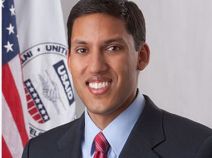USAID, Hillary Clinton launch Global Development Lab to fight poverty

Former Secretary of State Hillary Clinton and the U.S. Agency for International Development (USAID) last week launched the program called the U.S. Global Development Lab.
The program is a partnership between USAID and 31 universities, corporations and foundations that will support and develop solutions to global problems using science and technology. Its goal is to eradicate extreme poverty by 2030.
By using a strategy based in science and technology to approach the many issues faced by poor communities across the globe, America can lead the effort to end poverty, said USAID administrator Dr. Rajiv Shah.
USAID has spent the past four years cutting programs and reallocating funds so the Lab would have the resources necessary to launch. In 2008, USAID spent only $127 million on scientific developments.
In 2013, it spent closer to $800 million and is expecting as much as $30 billion in individual investment over the course of the project with the help of their partners including The University of California at Berkeley and the Gates Foundation.
These partners and others are developing products that marry cost-effective strategies with science and technology, often creating simple strategies to tackle problems ranging from hunger to disease to literacy in the process.
A group of Stanford University graduates are shopping a low-cost, environmentally friendly home lighting product that set out to reach 22 million people in Africa who currently rely on kerosene lamps to light their homes at night.
USAID partners at Berkeley created a mobile application that can detect water borne diseases using an iPhone camera and parts built from a 3-D printer. And by working together, USAID hopes the solutions will reach a higher number of people at a faster pace.